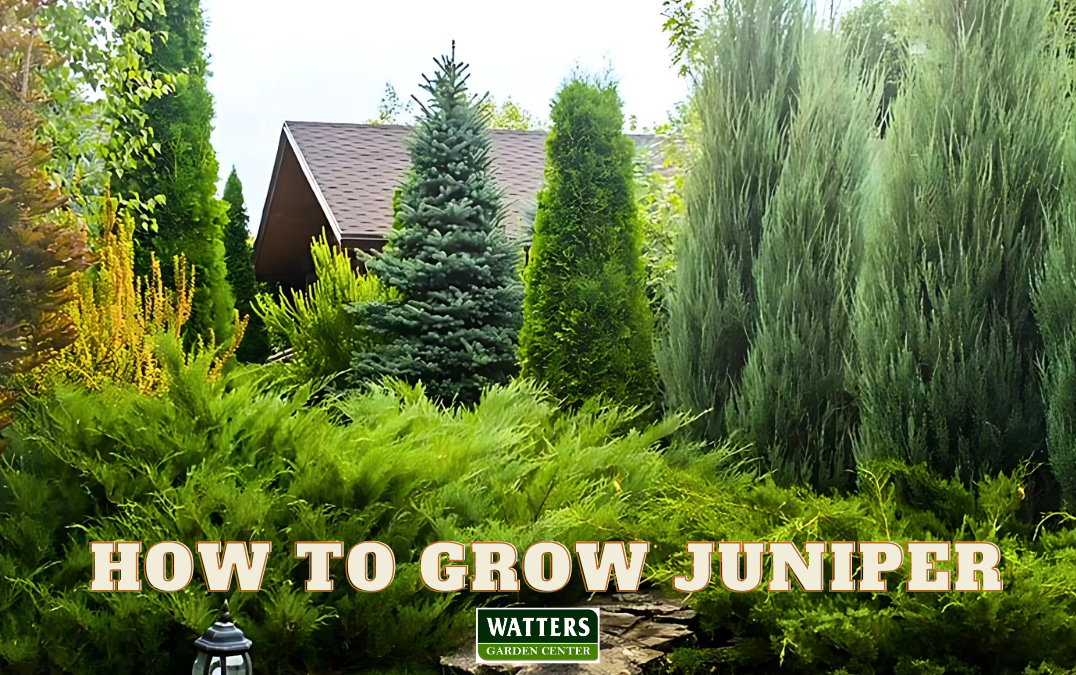
World’s Oldest Shrub Reveals 1647 Life Span
Share
by Ken Lain, the mountain gardener

The world's oldest shrub was just found in Finland's tundra. The old-timer is a direct cousin of Arizona's Junipers found throughout the mountains, Juniperus Communis. We know many local junipers date back to the pre-Columbian era, over 1000 years. According to ring analysis, scientists found the oldest Juniper in Finland dates back to 260 CE. That puts the oldest known shrub at 1647 years old. We may have some local juniper of that age yet to be found. Like other long-lived trees, Junipers often grow in remote and challenging environments, contributing to their longevity. It is safe to say that Junipers thrive in local landscapes and are a worthy addition to your backyard.
Juniper is the most widespread woody species in the world. It is found from sea level to the upper limits of vegetation, Alaska to Italy's Mount Etna, Japan to the Rocky Mountains. It is a highly eclectic species, capable of tolerating scorching temperatures and aridity, such as in sandy dunes and freezing environments at a glacier's edge. Junipers are the toughest plants on earth.
Common junipers are evergreen coniferous from the cypress family. They range from a tall, tree-like form that can reach up to 50' tall to a short shrub with a sprawl across rocky terrain as a ground cover. Each is characterized by needle-like, aromatic leaves and berry-like green cones that turn a deep purple when ripe.
The berries are an essential source for birds. People enjoy flavorful juniper berries, a prominent ingredient in gin, which can also be used to make tea and flavor cooked meats and vegetables.
Botanical Name: Juniperus communis
Common Name: Common Juniper
Plant Type: Evergreen conifer
Mature Size: 1-50' tall
Sun Exposure: Full sun
Soil Type: Well-draining
Soil pH: Not particular
Bloom Time: Winter
Hardiness Zones: 2 thru 8
Native Area: North America, Europe, Asia
How to Grow Common Juniper
Common Juniper is a remarkably hardy and adaptable shrub, perfect for challenging landscapes. It thrives in full sun and poor, well-drained soils, easily tolerating drought and urban pollution. Ideal for ground cover, rock gardens, and mass plantings, it requires minimal maintenance, with only light pruning needed in late winter for shaping. Its slow growth and rugged beauty make it a reliable and low-maintenance choice for any gardener, particularly in tough, sunny locations.
Light
Juniper loves the sun, plain and simple. Plant it where it basks in sunshine for most of the day, at least six hours. Without ample sunlight, this evergreen will struggle; you'll see stunted growth and a general lack of vigor. Full shade is a death sentence for Juniper. So, pick the sunniest spot in the yard and watch it thrive. It's that simple: sunshine equals a happy, healthy juniper.
Soil
Soil? Don't fret too much over it with junipers. These hardy plants aren't what you'd call fussy eaters. As long as the water drains away, they're generally content. They'll take to just about any soil, from those highly alkaline spots to the more acidic ones. They're just as happy on a windswept plateau or a sandy slope. They thrive in those tough, exposed places. Whether you've got clay, sand, or something in between, your Juniper settles right in as long as it drains well. It's a plant that appreciates a bit of grit, just like us.
Water
Common Juniper is a survivor, handling drought efficiently, but it despises soggy roots. While adaptable to dry and wet conditions, waterlogged soil or standing water will quickly lead to its demise; good drainage is non-negotiable. In its native range, supplemental watering is rarely needed, as it thrives on natural rainfall. When watering, allow the soil to dry out between applications, mimicking its preference for dry, rocky slopes.
Temperature and Humidity
Originating from the cool, temperate zones up north, it's built to handle various temperatures. We're talking about a severe cold, down to -49 degrees Fahrenheit, and it can take the summer heat too, up to 100 degrees. That's why it thrives in USDA zones 2 through 8. It's a tough plant, accustomed to the extremes, making it a reliable choice for our varied climates.
Juniper Plant Food
Feed 4x Times per Year with 7-4-4 All Purpose Plant Food, Soil Sulfur, or Humic. Here's the recommendation by season:
Spring = 7-4-4 All Purpose Food + Soil Sulfur
Summer = 7-4-4 All Purpose Food + Humic
Fall = 7-4-4 All Purpose Food
Winter = 7-4-4 All Purpose Food
How to Grow Common Juniper From Seed
Propagating Juniper is a bit of a patient gardener's game. Seeds are the most common route, but it's not always a quick journey. You see, junipers are dioecious, meaning you need both a male and a female plant nearby to get those berries. Wait until those berries ripen to a dark purple, then harvest the seeds.
Clean and dry those seeds to prevent mold. Here's the kicker: they need a cold spell called cold stratification to wake up and germinate. Think of it as a long winter's nap. You'll need to store them in an airtight container in your refrigerator, between 20 and 40 degrees Fahrenheit, for about four months before planting. And here's a bit of earthy wisdom: juniper seeds can be stubborn. Sow plenty because not all will sprout. It's like planting a whole row of seeds, hoping for a good harvest. Patience, my friend, patience is key.

Insider Tip: The growers at Watters Garden Center start junipers by cuttings to ensure we replicate the perfect female specimen. Male Juniper produces a lot of allergenic pollen. Female Juniper appears vivacious in the landscape without an allergic response.
Until next issue, I'll be helping gardeners plant long-lived shrubs here at Watters Garden Center.



